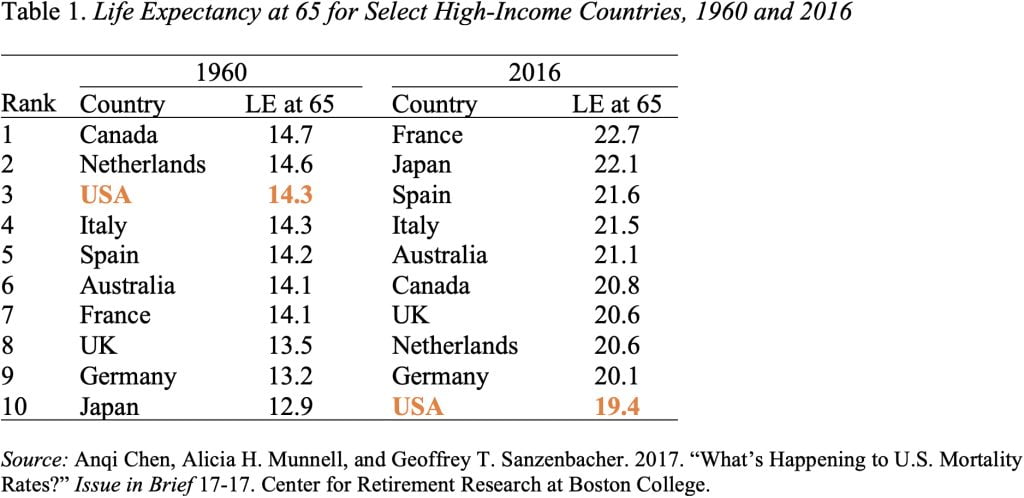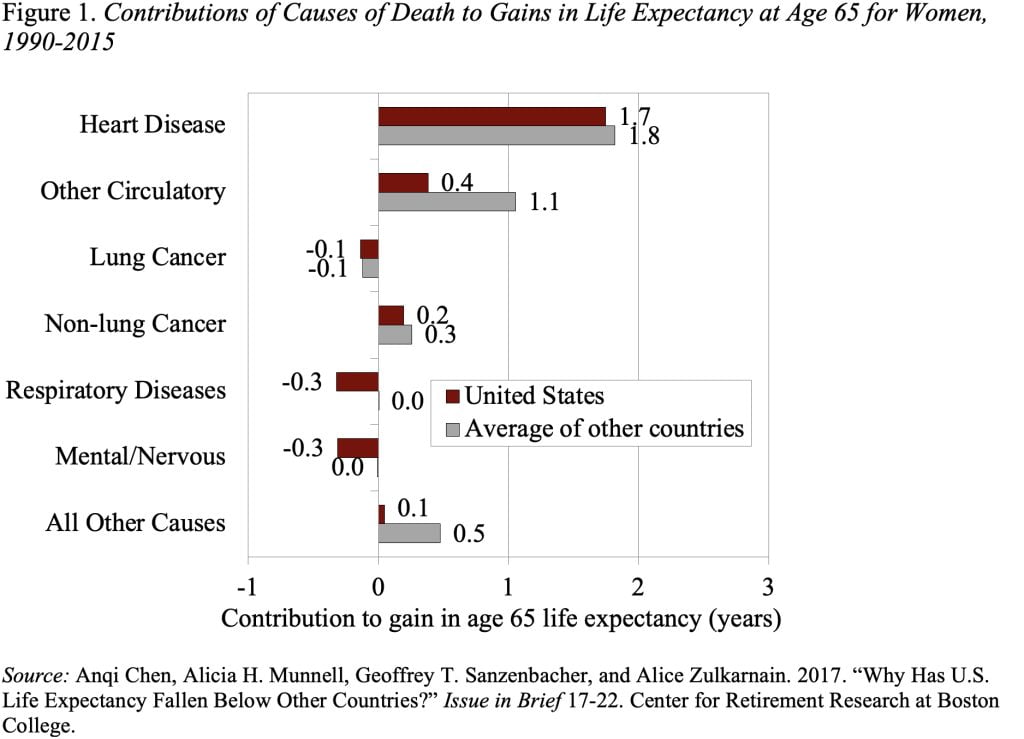U.S. Life Expectancy at Age 65 Far Below Comparable Countries
Alicia H. Munnell is a columnist for MarketWatch and senior advisor of the Center for Retirement Research at Boston College.
The future depends on our ability to curb obesity.
Demographics may not be destiny, but they are certainly interesting. We have just finished up two studies on the topic. The first looked at the fluctuation in mortality rates over time in the United States and the second – just released – explores why the United States has fallen so far behind other developed countries in terms of mortality. Let’s start with the second study first.
The mortality rate measures the number of people who die each year in a given population. The point of thinking about mortality rates is that they determine life expectancy. Mortality rates tend to fall over time so life expectancy generally rises. The interesting question is how fast mortality rates are falling and, thereby, how fast life expectancy is increasing.
The United States and other high-income countries have experienced immense gains in life expectancy over the last several decades. However, life expectancy gains in the United States have not kept pace with those of its peers. In 1960, the U.S. ranked #3 among ten major countries in life expectancy at 65, but by 2016 its ranking had dropped to #10 (see Table 1). While U.S. life expectancy for both men and women is now the lowest among their counterparts in the other high-income nations, the discrepancy is especially stark for women.

The most direct way to explain the divergence in life-expectancy trends across countries is to look at cause-of-death data. This process involves grouping mortality rates for men and women ages 65 and older into seven categories: heart diseases, other circulatory diseases, lung cancer, non-lung cancer, respiratory diseases, mental/nervous system diseases, and “all other.” It then compares the contribution of the various causes of death to gains in life expectancy for the United States relative to the average for the other nine high-income counties (see Figure 1 for the comparison for women). For example, declines in mortality from heart disease have contributed to life expectancy gains of over 1.5 years both in the United States and in the other countries.

The United States showed much less improvement than the other countries in deaths from other circulatory diseases, which include stroke. The shortfall in this category, which was the single largest gap between the United States and other countries for both men and women, is very likely due, in part, to the increased prevalence of obesity in the United States relative to the other countries.
U.S progress in deaths from respiratory diseases also fell short of other countries for men, and death rates actually increased for women. The number of lung cancer deaths among women also increased. Both these patterns can be attributed to historically high levels of smoking in the United States.
However, smoking has declined everywhere, including the United States, so its adverse effects on health have largely played out. Hence, whether U.S. life expectancy can catch up to that of other high-income countries in the future may depend on our ability to curb obesity and its harmful effects.






